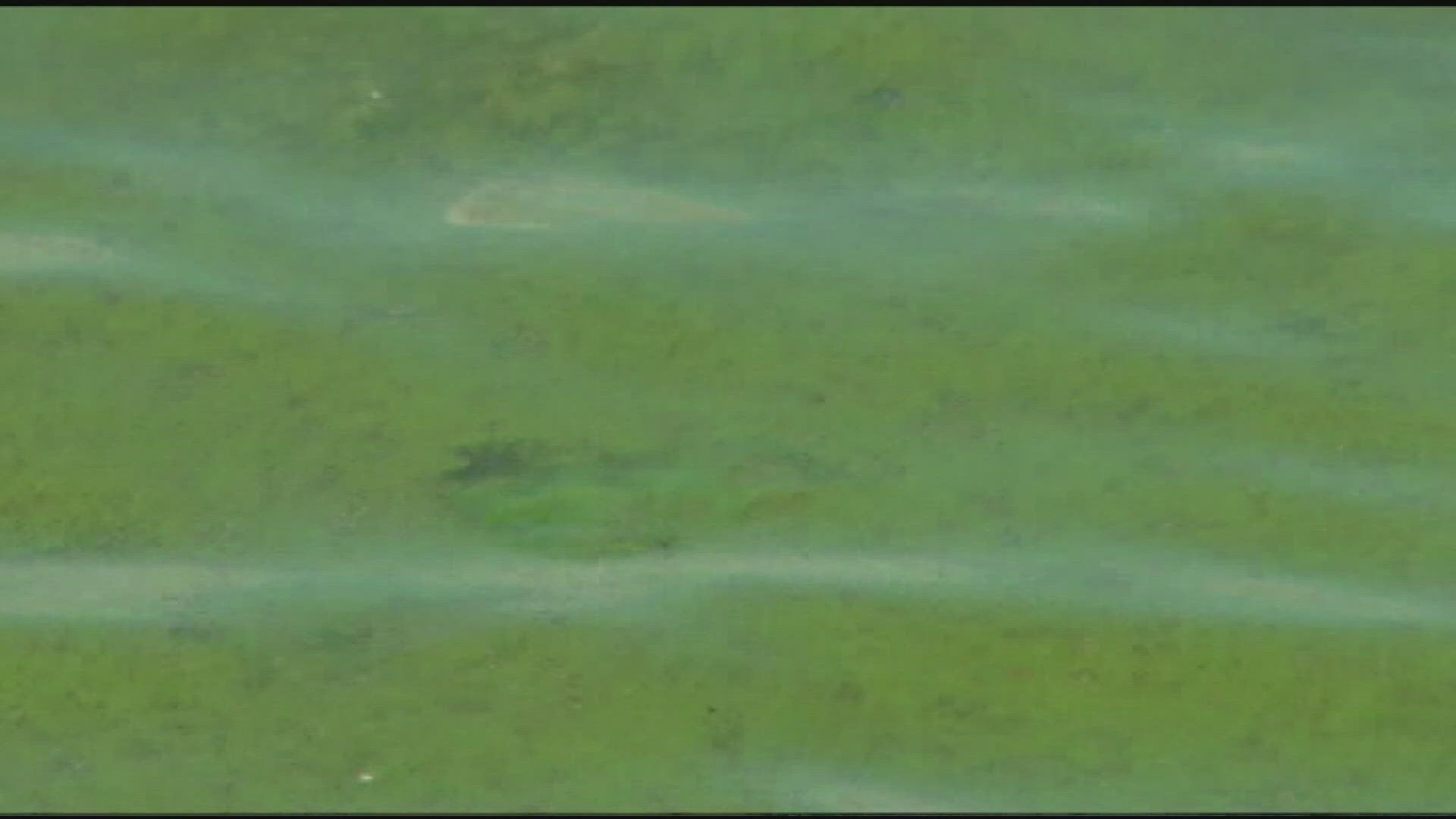OHIO, USA — Scientists with the National Oceanic and Atmospheric Administration (NOAA) issued an early season projection Thursdaya "moderate" and "larger than moderate" harmful algal bloom (HAB) in Lake Erie for the 2024 summer.
According to an NOAA publication, the National Centers for Coastal Ocean Science and the National Center for Water Quality Research at Heidelberg University predict the western basin of Lake Erie will experience a bloom severity between 4.5 and 7.5. A bloom index of 5 is moderate, NOAA said, while an index of 7 is particularly severe.
The forecast bloom severity index, which was developed in 2002, forecasts the bloom's severity based on its biomass, or the amount of algae, during the peak 30 days of the bloom, the NOAA said. While the index does not have an upper limit, the largest blooms occurred in 2011 and 2015, with severity indices of 10 and 10.5, respectively. In 2022, the index was 6.8. Western Lake Erie has not seen a bloom index below 2 since 2007.
The ultimate severity of the bloom will depend on the amount of precipitation the area receives throughout the rest of spring. Toledo received a record amount of rain - the most ever measured in the month of April - at 7.94 inches; additionally, between January and April, Toledo saw the third-most amount of rain in that time span ever recorded. According to the WTOL 11 Weather Team, more rain in the first two weeks of May is expected.
READ MORE: Toledo records rainiest April on record; will showers continue into May? | Climate Friday
According to the NOAA projection, the 2024 harmful algal bloom may be similar to the blooms seen in 2017 and 2022 if rainfall remains above average for the rest of spring. If rainfall is near or below average, a smaller, more moderate bloom is likely.
HABs, which consist of cyanobacteria, are fed by nutrient loads, mainly phosphorous used in fertilizer, that enter Lake Erie in the form of runoff after rainfall. According to the NOAA, as of Friday, the Maumee River has received bioavailable phosphorous loads that were "well above average," the second highest April load since 2000.
The harmful algal bloom typically peaks in August and September during late summer and early autumn. In early 2023, experts predicted a slightly smaller-than-average algae bloom, measured quantitatively in terms of a severity index around 3. On July 27, however, scientists with the NOAA updated their forecast to predict a bloom severity of 4.5 at minimum, with a maximum of 5.5.
Stay with WTOL 11 throughout the year for the latest climate and environmental news in northwest Ohio and southeast Michigan. Subscribe to the Climate Friday newsletter for weekly content.
WATCH MORE FROM WTOL 11

